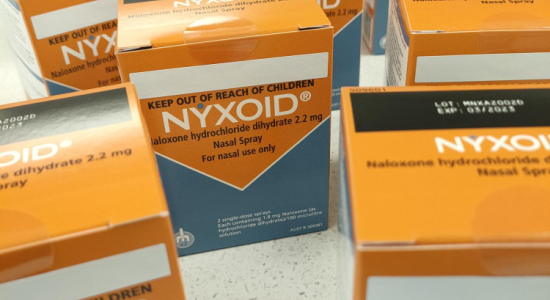Viewpoints - Should ibogaine be an approved drug treatment?

Ibogaine is a naturally occurring alkaloid of the Tabernanthe iboga plant, which is native to West Central Africa. It ’s a powerful psychedelic that has been used medicinally and in religious ceremonies for centuries.
But now a growing network of doctors, researchers and activists - many of whom are active in ‘underground’ ibogaine treatment centres because its use is illegal in many countries - say this substance is the new wonder drug for treating opiate addiction. It may also be effective for addictions to alcohol and nicotine and the treatment of obsessive compulsive disorders.
However, many medical professionals warn not enough is yet known about ibogaine to be sure the substance is safe and that its side-effects give more than enough cause for pause.
In this edition of Viewpoints, we provide the arguments for and against approving ibogaine as a treatment for addiction and withdrawal. VOTING HAS NOW CLOSED
Why ibogaine should be an approved drug treatment
Ibogaine was first popularised in the 60s by former heroin addict Howard Lotsof who found that, after just one dose, he had completely lost his craving for heroin without having to go through the typically brutal and potentially fatal withdrawal process.
Lotsof’s experience has been repeated by many addicts, including some from New Zealand, who have been treated in clinics run by his followers in countries like Canada and the West Indies where its use is not illegal.
Those treated typically report a dreamlike phase lasting several hours followed by an intense and lucid introspective phase than can last for days. During this, subjects often say they are able to examine and understand the psychological and emotional reasons for their drug-taking. This is also when they typically notice the complete absence of withdrawal symptoms, which, for many, never return. Some are even surprised to experience a new and resolute determination never to return to drug use.
The theory is that ibogaine works by filling in opiate receptor sites, which ends cravings for the drug and effectively hits the reset button on the brain’s neurotransmitter mechanisms. At the same time, the liver metabolises it into noribogaine, which is thought to have powerful detoxifying and anti-depressant properties. This further helps eliminate the pain and danger associated with withdrawal.
In the US, ibogaine is designated under Schedule 1 due to its “high potential for abuse or addiction and no known medicinal applications”, but this is patently ridiculous.
Unlike other treatment substances such as methadone, ibogaine is in fact nonaddictive and doesn’t need to be taken on a continuing basis. Its effectiveness makes its medicinal value obvious, and it has virtually no abuse potential – it is incredibly expensive and comes with some unfortunate short-term side-effects such as heavy nausea. Even Timothy Leary said, “It’ll never be a party drug.”
Admittedly, clinical evidence for ibogaine’s effectiveness in humans is a little patchy, but this is largely because pharmaceutical companies have routinely failed to get behind its research – concentrating instead on more profitable addiction maintenance drugs. Anecdotal evidence for its effectiveness is, however, overwhelming and cannot be disregarded.
Ibogaine works, it’s natural and it’s safe. Not one of the few deaths associated with its use has been caused by ibogaine itself. Each resulted from pre-existing medical conditions that are now rigorously screened for by those administering ibogaine treatment.
It is time to take this wonder drug out of the too-hard basket and approve it for more widespread use. If we consider the suffering of millions of addicts around the world – and of their loved ones – that could be completely overcome, not to do so would be a tragic sin of omission.
Why ibogaine should not be an approved drug treatment
Ibogaine has been used to treat opioid addiction and withdrawal since the early 60s, and on the basis of anecdotal results alone, we’d have to agree its potential looks promising.
Unfortunately, however, ibogaine is an extremely powerful hallucinogen with some alarming and potent side-effects including neurotoxicity (body tremors, postural instability and ataxia), cardiac effects (reduced heart rate and blood pressure, and interruptions to the heart’s electrical system), cardiotoxicity, nausea and vomiting. Studies have suggested there is a significant risk of brain damage associated with high dosages, and there have been at least 12 documented deaths linked to its ingestion.
Despite enthusiastic endorsement by many who have used it, these serious risks cannot be ignored, and the fact is, we just don’t yet know enough about how the drug works to be sure its use is safe. No randomised controlled clinical trials in humans or long-term effectiveness studies have been published. Its proponents themselves are unable to provide much in the way of follow-up data, and even descriptions of ibogaine treatment procedures are sparse.
Ibogaine is not an approved drug in New Zealand, and its safety and effectiveness have not been evaluated by Medsafe. However, it was gazetted as a prescription medicine under the Medicines Act in 2010, which allows registered medical practitioners to prescribe unapproved medicines for the treatment of patients in their care.
Considering ibogaine’s potential to do harm, medical professionals should be extremely cautious before using it as a treatment option until there is a robust body of knowledge about its effectiveness and safety in humans. Ibogaine’s day may come, but until we know more about it and how to use it safely, we are better off sticking with proven treatments.
Recent news

Beyond the bottle: Paddy, Guyon, and Lotta on life after alcohol
Well-known NZers share what it's like to live without alcohol in a culture that celebrates it at every turn

Funding boost and significant shift needed for health-based approach to drugs
A new paper sets out the Drug Foundation's vision for a health-based approach to drug harm

Expert Pharmac committee recommends funding for overdose reversal nasal spray
The expert committee has said funding for naloxone in the community should be a high priority

